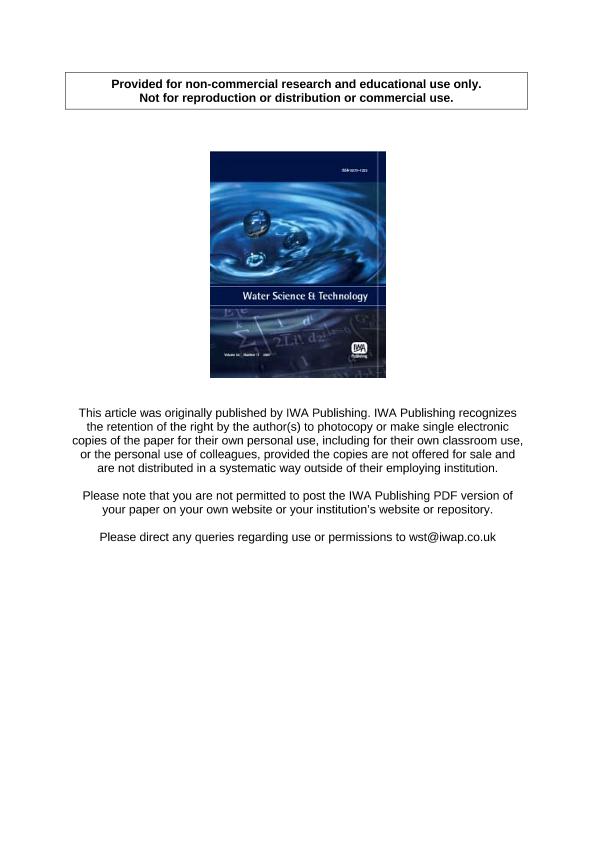Artículo
A novel approach to explain the inactivation mechanism of Escherichia coli employing a commercially available peracetic acid
Flores, Marina Judith ; Lescano, Maia Raquel
; Lescano, Maia Raquel ; Brandi, Rodolfo Juan
; Brandi, Rodolfo Juan ; Cassano, Alberto Enrique
; Cassano, Alberto Enrique ; Labas, Marisol Daniela
; Labas, Marisol Daniela
 ; Lescano, Maia Raquel
; Lescano, Maia Raquel ; Brandi, Rodolfo Juan
; Brandi, Rodolfo Juan ; Cassano, Alberto Enrique
; Cassano, Alberto Enrique ; Labas, Marisol Daniela
; Labas, Marisol Daniela
Fecha de publicación:
01/2014
Editorial:
Iwa Publishing
Revista:
Water Science And Technology
ISSN:
0273-1223
Idioma:
Inglés
Tipo de recurso:
Artículo publicado
Clasificación temática:
Resumen
The chemical inactivation of Escherichia coli employing a commercial mixture of peracetic acid (PAA) was studied. For this purpose, experiments were carried out using dilutions of the unmodified mixture, and also the same mixture but altered with hydrogen peroxide (HP) previously inhibited. Also, these results were compared to those obtained before employing HP alone. It was found that the mixture is much more efficient than HP and PAA acting separately. Furthermore, it was found that PAA without HP is much more efficient than HP alone. A plausible explanation is presented. The homolysis of PAA would give rise to a chain reaction that generates a significant number of highly oxidizing radicals. An attacking scheme to bacteria in two stages is proposed, where the initial step, mainly caused by PAA, is very fast and eliminates some specific components of the bacteria that would otherwise inhibit the parallel action of HP. Thereafter, the emergence of a potentiating synergetic action of the second oxidant seems to be immediately unveiled.
Palabras clave:
Commercial Peracetic Acid
,
Synergism
,
Hydrogen Peroxide
,
Water Disinfection
Archivos asociados
Licencia
Identificadores
Colecciones
Articulos(INTEC)
Articulos de INST.DE DES.TECNOL.PARA LA IND.QUIMICA (I)
Articulos de INST.DE DES.TECNOL.PARA LA IND.QUIMICA (I)
Citación
Flores, Marina Judith; Lescano, Maia Raquel; Brandi, Rodolfo Juan; Cassano, Alberto Enrique; Labas, Marisol Daniela; A novel approach to explain the inactivation mechanism of Escherichia coli employing a commercially available peracetic acid; Iwa Publishing; Water Science And Technology; 69; 1-2014; 358-363
Compartir



